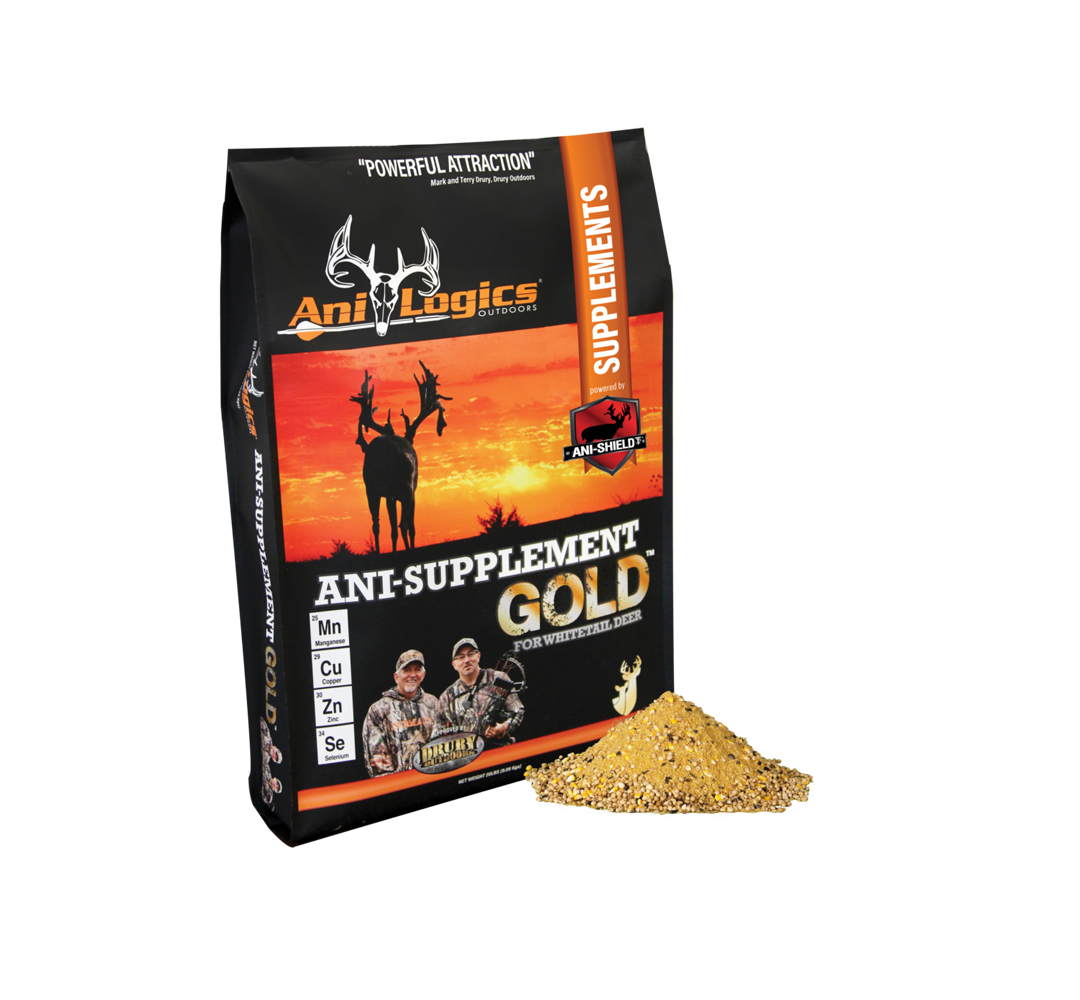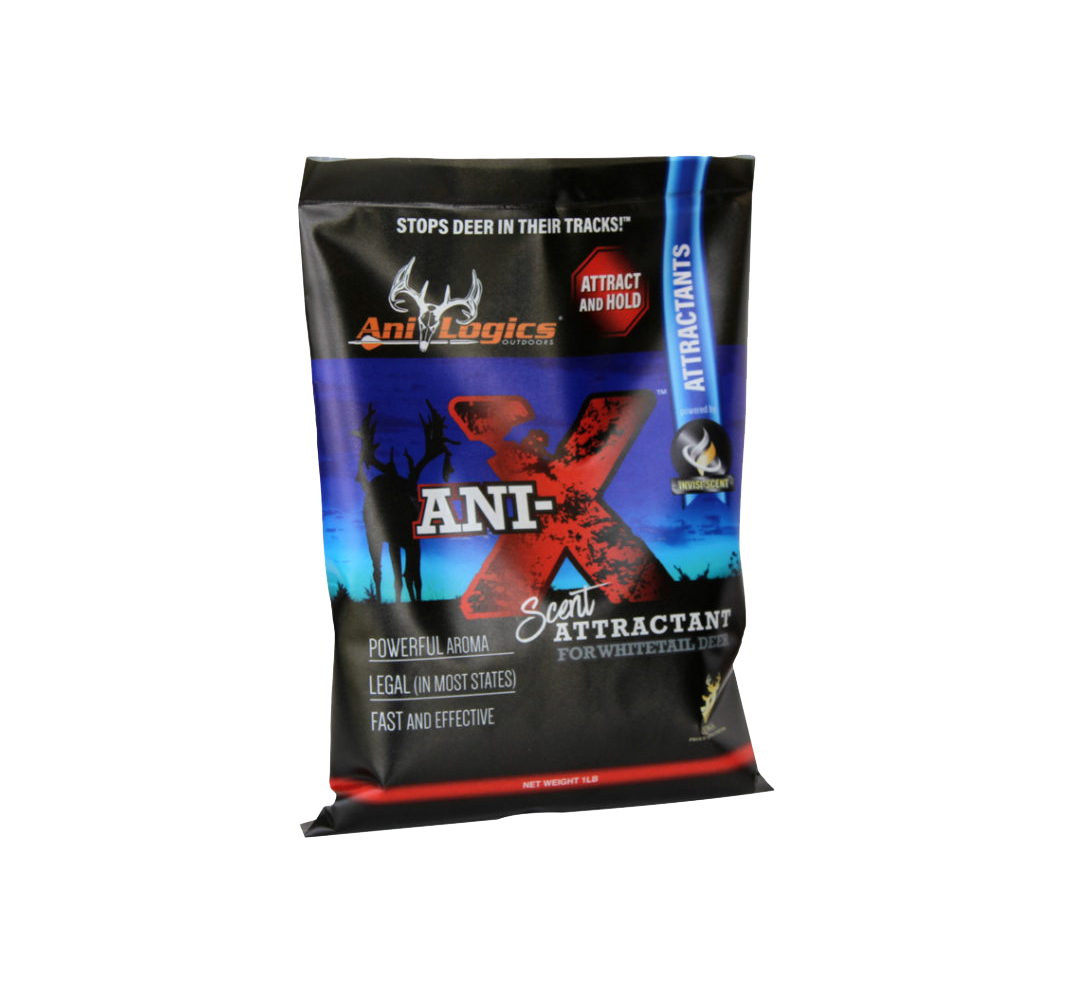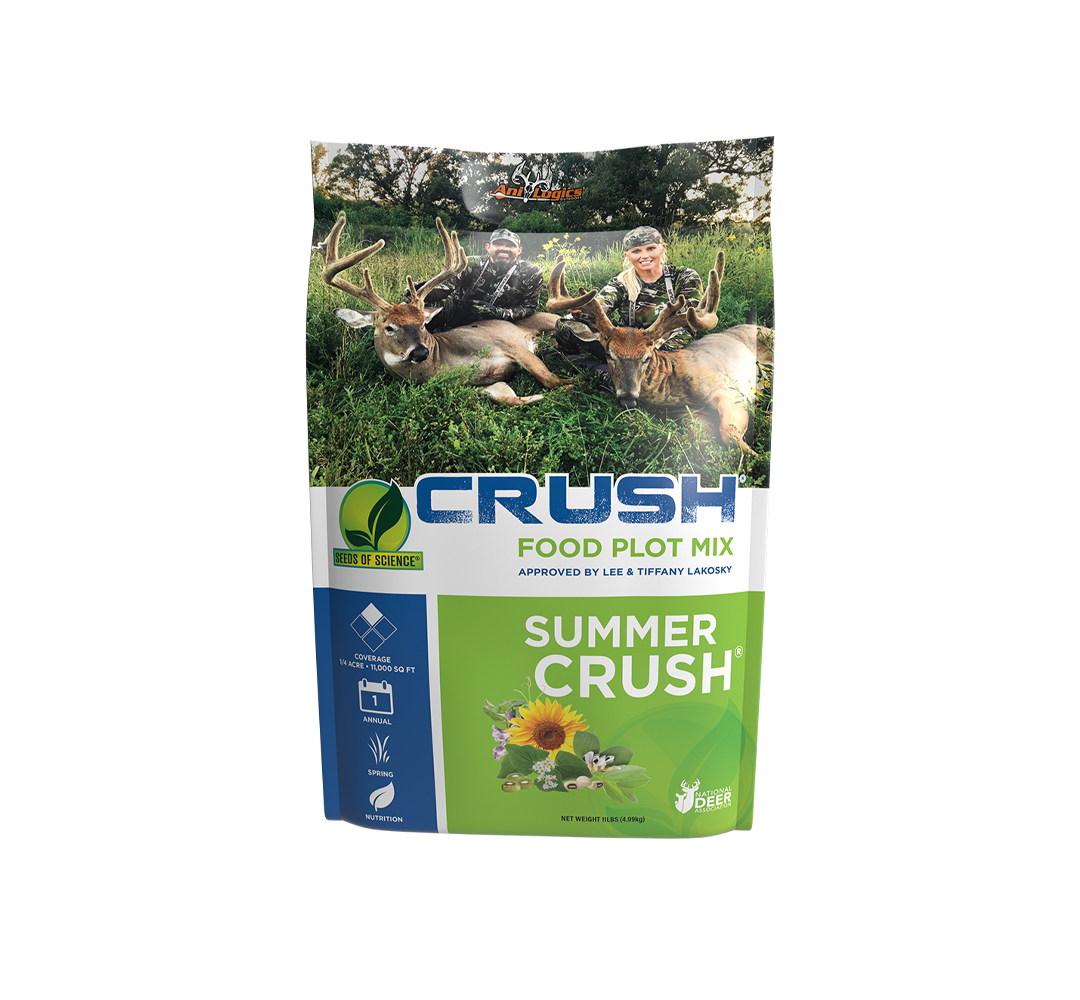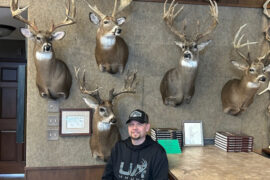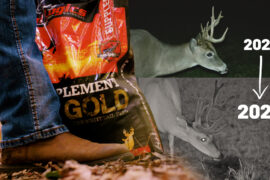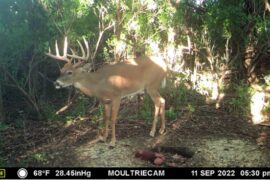Advice for Aging Bucks on the Hoof
With trail camera pictures rolling in, it’s time to decide if that borderline buck is on the hit list or if he gets a free pass this year. First off, I want to start with a disclaimer about aging bucks using photos; it’s nowhere near an exact science! Experts often disagree on the age of a buck using a trail cam picture, so don’t worry about being right all the time. Think of the process as an art rather than a science. The best indicator of a live buck’s age is to compare pictures from multiple years and see how much they have changed. I realize, however, that many of the deer we get on camera we have no history with, so that makes it more difficult.

Take a look at this buck from our trail camera here in Minnesota. The first picture is from 2014. The next pic is from this year. His brow tine on the right side was the same from both years.

Little has changed from a year ago, so that helps me realize this buck has basically peaked in terms of antler growth and is at least 5.5 years old.

Here is a good example of a yearling buck. His neck meets his chest very high and his back legs appear very long. If you covered up his rack, he looks like he has the body of a doe. He is also smaller than the mature doe next to him in this picture.

Here is a good example of a buck we believe is 2.5 years old. His neck meets his chest lower than the yearling above. His legs still appear long for the size of the body but not as much as a yearling.

Here is a buck that is a good example of a 3.5. He is showing signs of getting a pot belly and is starting to get a shoulder hump, but his rump is still higher than his shoulders. His neck meets his chest lower than the 2.5.

Here is a buck that I believe is 4.5. He has a bit of a sway back and a pot belly and even though this picture is from July, the neck meets the chest very low. His rump is flatter on top than many 2.5 and 3.5 year old bucks.

Another factor to consider is the time of year relative to the breeding season. Here in the Midwest, a summer buck looks very different than he does in late October/early November. Take a look at this buck in August from one of our research sites in Missouri. I think he was 5.5, but if you only had a summer pic of him you might think he was younger.

Here is the same buck at the same feeder in late October. Notice how his neck size has increased significantly and his front legs appear shorter because of the increased growth where his neck meets his chest.
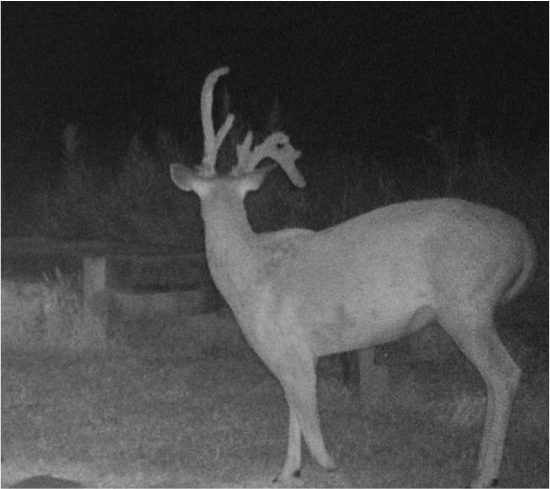
Here is a good example of a buck past his prime. He has a very prominent shoulder hump. His abnormal antler growth is a result of his front left hoof being injured (presumably by a shotgun slug) several years ago. Bucks also tend to get more abnormal points as they age, and lose tine length, which is the case with this buck. We believe he is 9.5 years old this year.
It takes practice to become proficient at aging live deer on the hoof. Getting to know a particular deer through trail cam pictures and then harvesting that deer is a very rewarding endeavor. Once you have a good grasp of aging deer from trail cam pictures, aging live deer while hunting becomes much easier. Keep those trail cameras active and good luck hunting those hit list bucks this fall!
Your Cart
Categories
- Attractants 26
- CWD 1
- Deer Management 62
- EHD 3
- Food Plots 17
- Hunting 85
- Land Management 17
- Minerals 28
- Shed Hunting 4
- Supplements 36
- Turkey Hunting 6
Browse Tags
Products
-
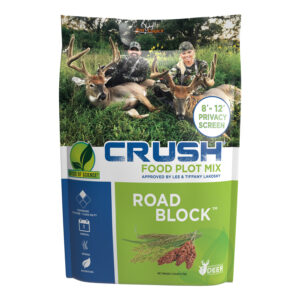 CRUSH Road Block
$29.99
CRUSH Road Block
$29.99 -
-
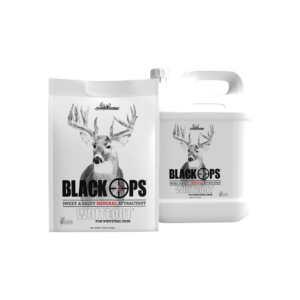 Whiteout Frenzy
$103.90
Whiteout Frenzy
$103.90 -
-
 Mineral Dirt 180 - 20lb
$34.99
Mineral Dirt 180 - 20lb
$34.99 -
-
 Summer CRUSH
$39.99 – $129.99
Summer CRUSH
$39.99 – $129.99 -


